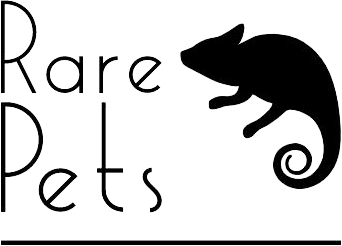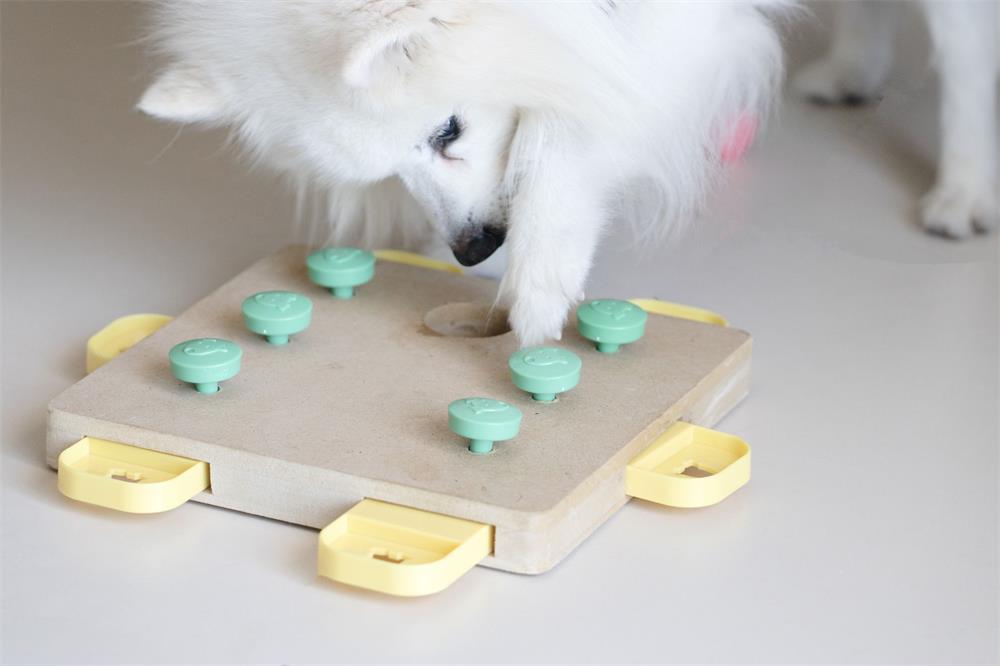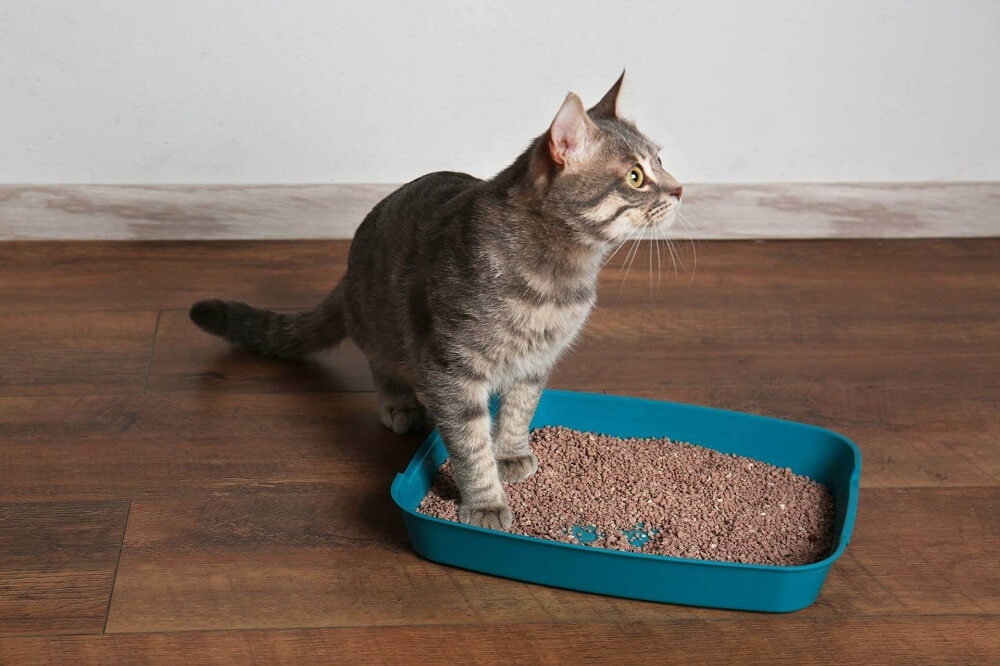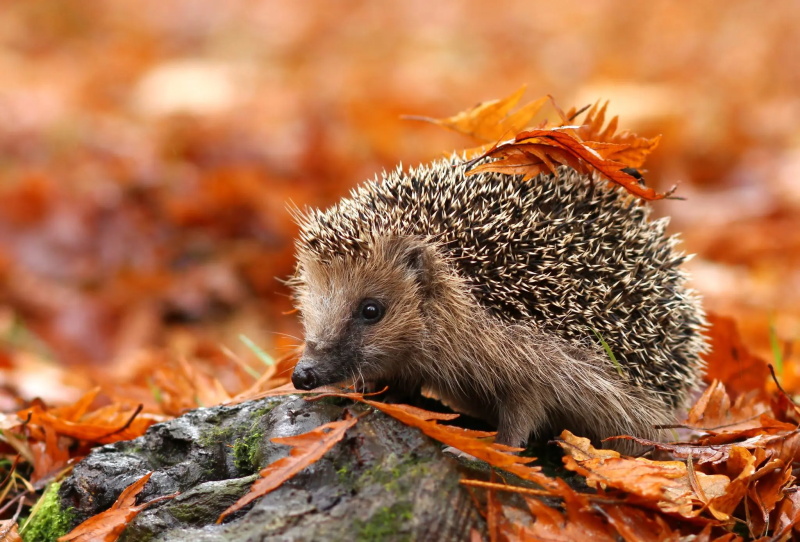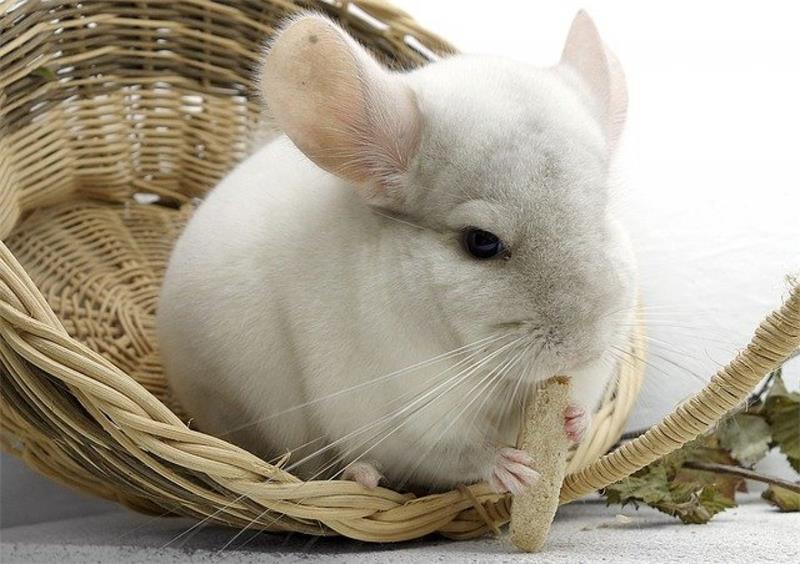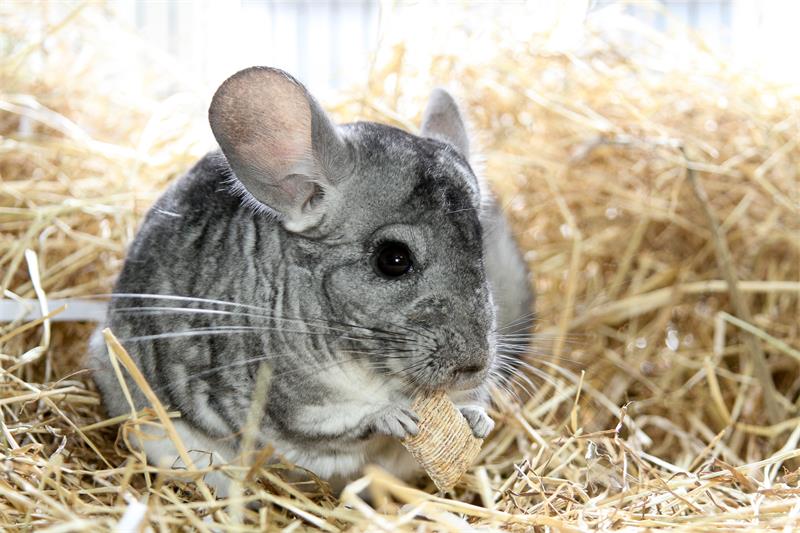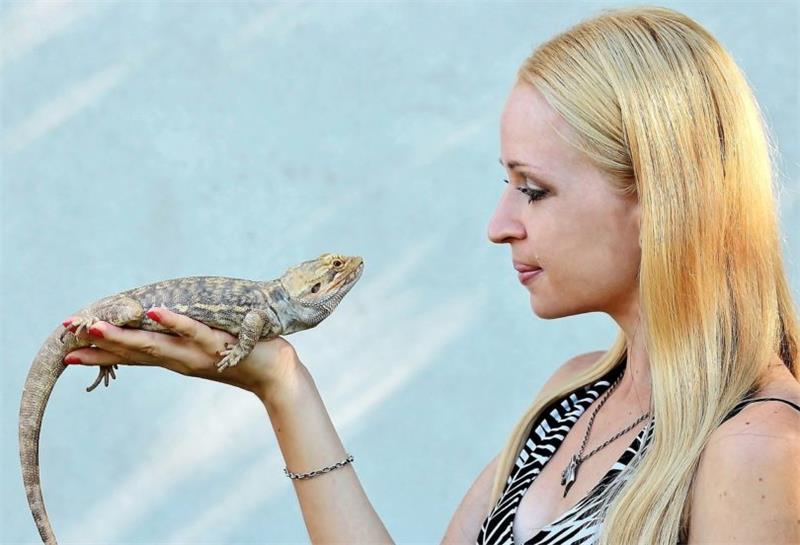
Table of Contents
Bearded dragons are popular and fascinating pets that can live up to 12 years in captivity with proper care. However, many owners do not know the exact age of their bearded dragons, especially if they acquired them from a rescue or a pet store. Knowing the age of your bearded dragon can help you provide better care and understand their behavior and development. In this article, we will share four ways to tell the age of your bearded dragon, as well as some factors that can affect their growth and size.
1. Measure Your Bearded Dragon
One of the easiest and most common ways to estimate the age of your bearded dragon is to measure their length from head to tail. This method works best for bearded dragons that are under one year old, as they grow rapidly during this period and their size can indicate their approximate age. However, this method is not very accurate for adult bearded dragons, as they stop growing after reaching maturity and their size can vary depending on their species, gender, diet, health, and genetics.
To measure your bearded dragon, you will need a soft measuring tape or a piece of string and a ruler. Gently stretch your bearded dragon on a flat surface and measure their length from the tip of their nose to the end of their tail. Do not force them to straighten if they are curled up or resist. You can also use a piece of string to mark their length and then measure it with a ruler.
Once you have measured your bearded dragon, you can compare it with a bearded dragon size by age chart to get an estimate of their age. Here is an example of such a chart based on the average size of central bearded dragons (Pogona vitticeps), which are the most common species kept as pets:
| Age | Length |
|---|---|
| 0 to 1 month | 3″ to 4″ inches |
| 2 months | 5″ to 9″ inches |
| 3 months | 8″ to 11″ inches |
| 4 months | 9″ to 12″ inches |
| 5 months | 11″ to 16″ inches |
| 6 months | 11″ to 18″ inches |
| 8 months | 13″ to 20″ inches |
| 12 months | 16″ to 22″ inches |
As you can see, there are some overlaps in the measurement sizes of the bearded dragons, which means that this method is not very precise and can only give you a rough idea of their age. Moreover, this chart may not apply to other species of bearded dragons, such as eastern bearded dragons (Pogona barbata), which are smaller and grow slower than central bearded dragons. Therefore, you should also consider other factors that can affect your bearded dragon’s size, such as:
- Gender: Male bearded dragons tend to be larger and heavier than female bearded dragons, especially in terms of head size and beard length. Male bearded dragons can also have larger femoral pores (the bumps on their hind legs) than females. However, gender differences may not be noticeable until they reach sexual maturity, which usually happens around six to eight months of age.
- Diet: A balanced and varied diet is essential for your bearded dragon’s growth and health. Bearded dragons need both animal and plant matter in their diet, as well as calcium and vitamin supplements. A lack of proper nutrition can stunt your bearded dragon’s growth and cause health problems such as metabolic bone disease (MBD), which affects their bones and joints. On the other hand, overfeeding your bearded dragon can lead to obesity and organ damage.
- Health: Your bearded dragon’s health can also influence their size and growth rate. Some health issues that can affect your bearded dragon’s growth include parasites, infections, injuries, stress, dehydration, impaction, and brumation (a form of hibernation). If you notice any signs of illness or abnormal behavior in your bearded dragon, such as lethargy, loss of appetite, weight loss, diarrhea, vomiting, swelling, bleeding, or breathing difficulties, you should consult a reptile veterinarian as soon as possible.
- Genetics: Your bearded dragon’s genetics can also play a role in determining their size and growth potential. Some bearded dragons may inherit genes that make them larger or smaller than average, regardless of their environmental factors. For example, some bearded dragons may have a dwarfism gene that makes them smaller than normal, while others may have a giantism gene that makes them larger than normal. However, these genetic variations are rare and usually only occur in captive-bred bearded dragons.
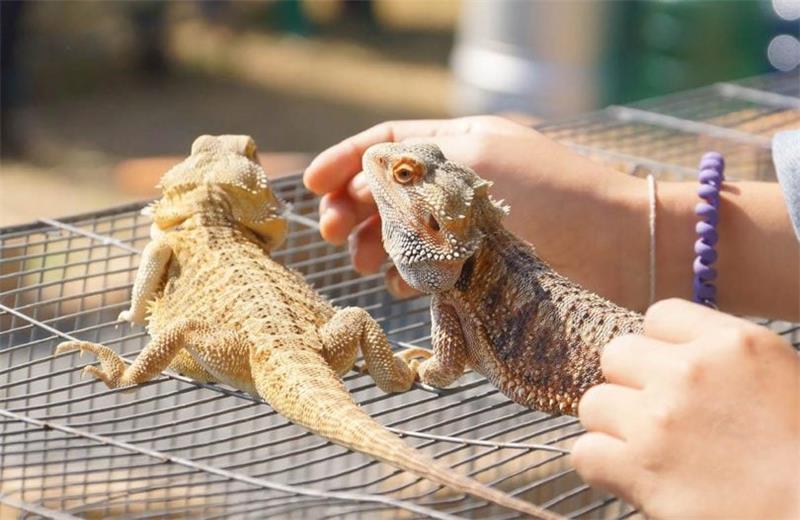
2. Check for Sexual Maturity
Another way to tell the age of your bearded dragon is to look for signs of sexual maturity. Bearded dragons usually reach sexual maturity around six to eight months of age, although this can vary depending on their species, gender, and individual development. Some signs of sexual maturity in bearded dragons include:
- Head bobbing: This is a behavior where the bearded dragon lowers and raises its head repeatedly, often accompanied by puffing up its beard. Head bobbing is a way of displaying dominance, aggression, or courtship, and is more common in males than females.
- Arm waving: This is a behavior where the bearded dragon lifts one or both of its front legs and waves them in a circular motion. Arm waving is a way of showing submission, appeasement, or recognition, and is more common in females than males.
- Beard darkening: This is a phenomenon where the bearded dragon’s beard turns black or dark gray, usually in response to stress, excitement, or mating. Beard darkening can occur in both males and females, but is more pronounced in males.
- Femoral pores: These are the bumps on the hind legs of the bearded dragon that secrete a waxy substance. Femoral pores are used for marking territory and attracting mates, and are more visible and active in males than females.
- Egg laying: This is the process where the female bearded dragon lays eggs, either fertilized or unfertilized. Egg laying usually occurs between two and four times a year, depending on the breeding cycle and environmental conditions. Female bearded dragons can lay eggs even without mating with a male, as they can store sperm for up to two years.
If you notice any of these signs in your bearded dragon, you can assume that they are at least six months old. However, these signs are not always reliable indicators of age, as some bearded dragons may mature earlier or later than others, or may not display these behaviors at all.
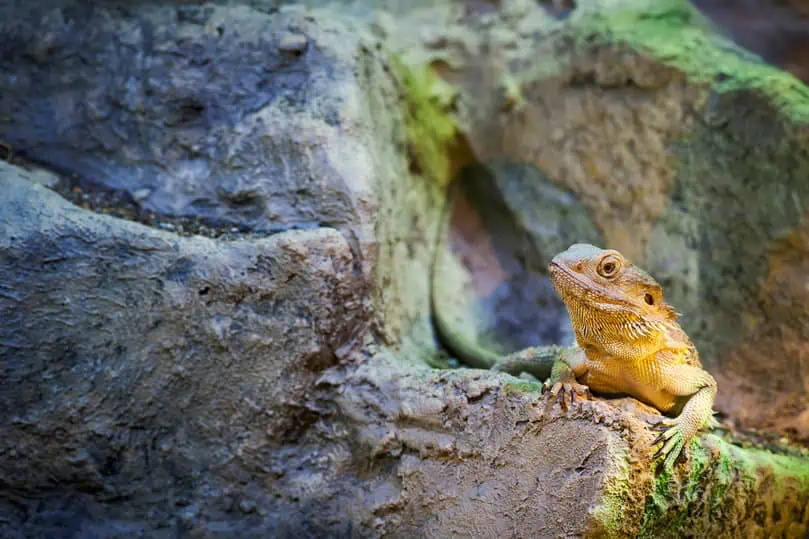
3. Contact the Breeder
The best and most accurate way to determine the age of your bearded dragon is to contact the breeder who sold it to you. The breeder should have detailed birth records that indicate the exact day your beardie was born. If you bought your bearded dragon from a reputable breeder, they should provide you with this information upon request. However, if you bought your bearded dragon from a pet store or a rescue center, you may not have access to this information, as they may not know the origin or history of your beardie.
If you do not know who the breeder of your bearded dragon is, you can try to find out by asking around or doing some online research. You can also look for clues on your bearded dragon’s appearance or behavior that may indicate their lineage or breed. For example, some breeders specialize in producing certain colors or patterns of bearded dragons, such as reds, oranges, yellows, whites, leucistics (lacking pigment), albinos (lacking melanin), hypomelanistics (reduced melanin), transgenics (transparent scales), or zeroes (no pattern). Some breeders also produce hybrids of different species of bearded dragons, such as central-eastern crosses or central-dwarf crosses.
Knowing the breeder of your bearded dragon can help you not only determine their age but also their health status and genetic background. This can help you provide better care and prevent potential health problems or genetic defects.
4. Consult Your Vet
Another option to tell the age of your bearded dragon is to consult your reptile veterinarian. Your vet may be able to estimate your beardie’s age based on their physical examination and medical history. Your vet may also perform some tests or procedures that can help determine your beardie’s age more accurately, such as:
- X-rays: These are images that show the internal structures of your bearded dragon’s body, such as bones and organs. X-rays can help reveal your beardie’s skeletal development and growth plates (the areas where bones grow), which can indicate their age range.
- Blood tests: These are tests that analyze your bearded dragon’s blood sample for various parameters, such as blood cell count, glucose level, calcium level, hormone level, and so on. Blood tests can help assess your beardie’s health status and metabolic function, which can also reflect their age.
- DNA tests: These are tests that examine your bearded dragon’s DNA sample for various markers, such as genes, mutations, or ancestry. DNA tests can help identify your beardie’s species, breed, gender, and genetic traits, which can also give clues about their age.
However, you should keep in mind that these methods are not always available or affordable, and they may not give you an exact age of your bearded dragon. Moreover, these methods may involve some risks or discomfort for your beardie, such as anesthesia, sedation, or blood drawing. Therefore, you should only consider these methods as a last resort or if your vet recommends them.
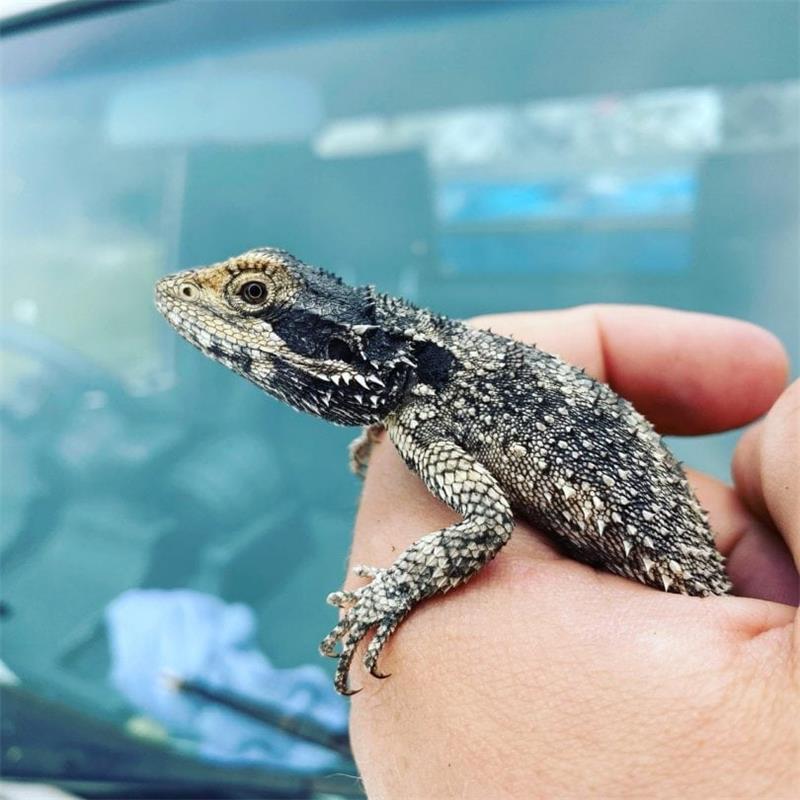
Conclusion
Knowing the age of your bearded dragon can help you provide better care and understand their behavior and development. However, determining the age of your bearded dragon can be challenging and often requires some guesswork. In this article, we have shared four ways to tell the age of your bearded dragon:
- Measure your bearded dragon
- Check for sexual maturity
- Contact the breeder
- Consult your vet
These methods can give you a rough estimate or a range of your beardie’s age, but they are not very precise or reliable. The only way to know the exact age of your bearded dragon is to know their birth date from the breeder. Therefore, if you are planning to buy a bearded dragon, you should always ask for their birth certificate or record from the breeder.
